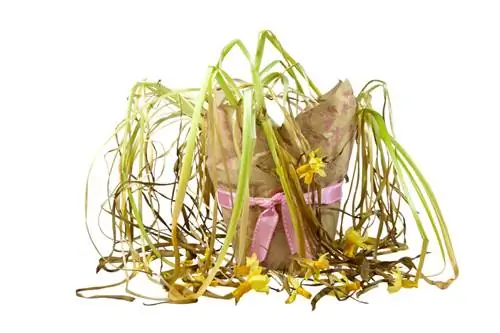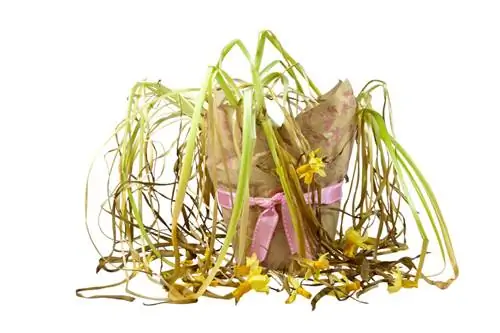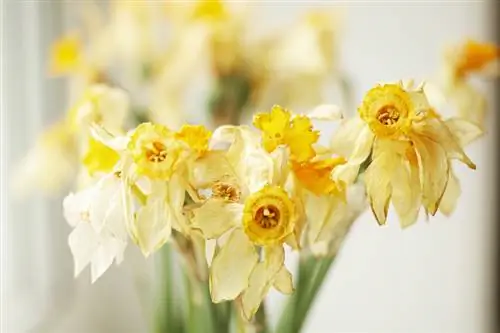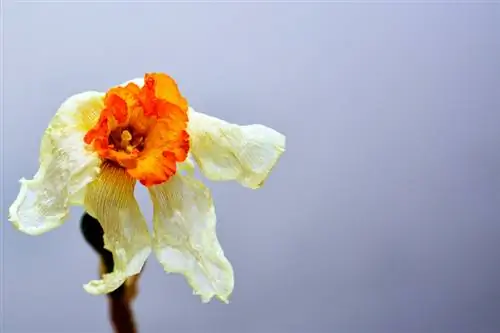- Author admin [email protected].
- Public 2023-12-16 16:46.
- Last modified 2025-06-01 06:02.
What a tragedy: the daffodils have bloomed. Now they look miserable. The flowers are brown and the leaves hang limply. Is this the end of daffodils? Put it in the compost?

What to do with faded daffodils?
After the flowering period, faded daffodils should be cut off to help generate energy for the next year. Only remove the leaves when they are brown and dry. Daffodils can be fertilized, transplanted or propagated after flowering.
Flowering time of daffodils
Daffodils bloom at different times depending on the species. Most types of daffodils bloom between March and April. But there are also specimens that bloom in February or only appear with their flowers at the beginning of May.
Prune after flowering - do it right
After the flowers have wilted, they should be cut off. This prevents the seeds from developing. Of course this is not a must. But the seed formation of a daffodil takes an enormous amount of energy. The onion would need the energy to sprout again next year with ease.
Don't cut off the leaves too early
Don't be too eager! The leaves should not be cut off at the same time. They can only be removed when they are brown and dry. Beforehand, the onions soak up nutrients from the leaves underground. If you cut off the leaves too early, you can expect the daffodil to die. Usually the leaves are dead by mid-June and you can remove them.
If you are bothered by the limp leaves of the daffodils, you can tie them together. This is particularly recommended for daffodils that stand in large groups on a lawn or in a bed and create sad accents.
Fertilize gently after flowering
A light application of fertilizer is recommended after flowering. Daffodils in pots in particular should be supplied with a suitable complete fertilizer (€18.00 on Amazon), for example in liquid form. Daffodils outdoors are also happy when they are fertilized after flowering. The nutrient ration benefits the onions.
Transplant and propagate after flowering
Another measure that can be done after flowering, but does not necessarily have to be, is transplanting or repotting. Daffodils in pots should be repotted every year. Daffodils in the bed can stay in the same place for many years. If you want to implement it, you can use it to multiply.
This is how propagating daffodils after flowering works:
- It's best to dig up every 3 to 4 years
- cut down beforehand
- Sharing onions
- Plant bulbs separately
- Place onions at a depth of 10 to 15 cm
- water well and mulch if necessary
Waiting for the seeds after flowering
Not every gardener is bothered by dead daffodils. Some are eagerly awaiting the seeds in order to propagate the daffodils and possibly breed new varieties. If you don't cut the flower stem, you will receive the seeds after about 3 weeks.
Tips & Tricks
Daffodils bloom longer if they are kept in a cool place. Temperatures between 10 and 15 °C are ideal for long flowering.






